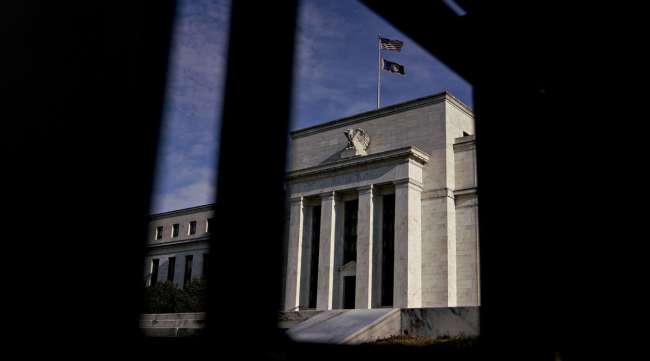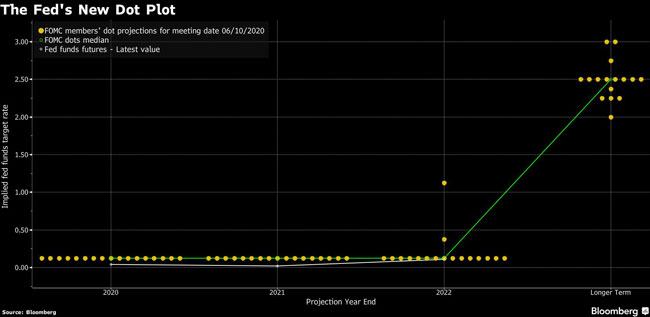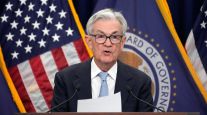Bloomberg News
Fed Sees Interest Rates Near Zero Through 2022

[Ensure you have all the info you need in these unprecedented times. Subscribe now.]
The Federal Reserve pledged to maintain at least the current pace of asset purchases and projected interest rates will remain near zero through 2022, as Chairman Jerome Powell committed the central bank to using all its tools to help the economy recover from the coronavirus.
“We’re not even thinking about raising rates,” he told a video press conference June 10. “We are strongly committed to using our tools to do whatever we can for as long as it takes.”
The Federal Open Market Committee earlier said it would increase its holdings of Treasury securities and agency residential and commercial mortgage-backed securities “at least at the current pace” to sustain smooth market functioning.
A related statement from the New York Fed specified that the pace of the increase would be about $80 billion a month for purchases of Treasuries and about $40 billion of mortgage-backed securities.
“Acting on mortgage-backed securities and Treasuries underscores their belief that more support is needed,” said Diane Swonk, chief economist with Grant Thornton in Chicago. “The Fed does not see a victory in the employment bounce back. The risk of deflation is still high, and the economy needs more support to heal more fully.”
U.S. stocks fluctuated, and the dollar slumped as investors assessed the Fed’s views on the economy. Treasuries rallied.
On Hold
The Fed’s quarterly projections — updated for the first time since December, after officials skipped their March release amid the burgeoning pandemic — showed all policymakers expect the funds rate to remain near zero through the end of 2021. All but two officials saw rates staying there through 2022.
The economy faces “considerable risks” over the medium term, the Fed said in its statement, reiterating language from the last FOMC meeting in late April.
Officials forecast the U.S. unemployment rate would fall to 9.3% in the final three months of the year from 13.3% in May, according to median estimates, and to decline to 6.5% in 2021. U.S. GDP was projected to contract by 6.5% this year before rebounding 5% next year.

May Job Surprise
The better-than-expected May payroll report could mark the low point for the labor market, Powell said, though the fact that it caught so many people by surprise “is clear evidence of just how uncertain things are.”
He also cautioned the labor market would take time to heal.
”My assumption is that there will be a significant chunk, well, well into the millions of people who don’t get to go back to their old jobs, and there may not be a job in that industry for them for some time. It could be some years before we get back to those people finding jobs.”
Powell said the FOMC had received a briefing on yield-curve control — a strategy to cap Treasury yields out to a specific maturity — and told reporters that such discussions will continue at upcoming meetings. Economists surveyed by Bloomberg expect them to consider adopting the strategy later this year.
Main Street
The central bank has unveiled nine emergency lending programs to keep credit flowing during the pandemic, though three are still to launch, including a facility aimed at Main Street businesses.
The Fed on June 8 expanded this program to include smaller companies and said it would be open to eligible lenders “soon.” Powell repeated this outlook and also said the Fed was looking very strongly at how it could incorporate nonprofit organizations in either the Main Street program or in a facility of its own.
Want more news? Listen to today's daily briefing:
Subscribe: Apple Podcasts | Spotify | Amazon Alexa | Google Assistant | More




